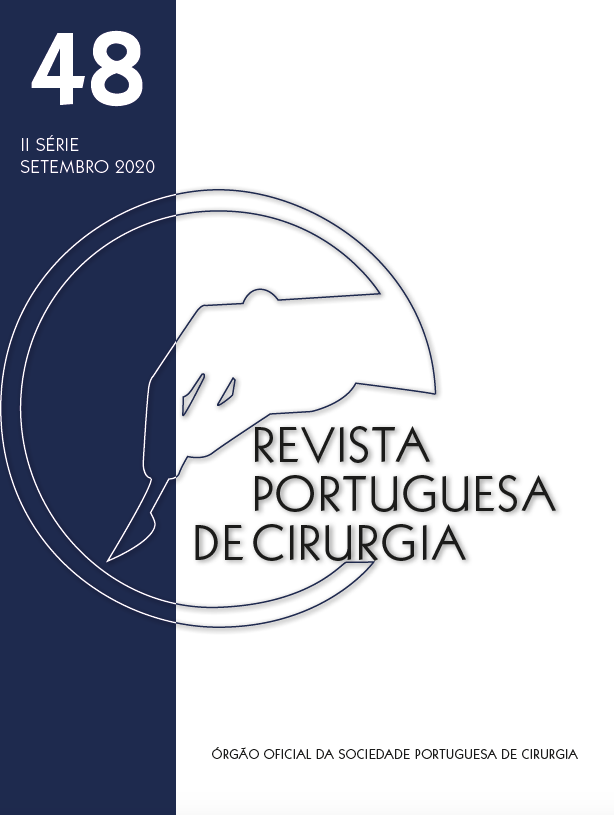HEPATIC CELL PROLIFERATION PEAKS ONE WEEK AFTER PORTAL VEIN LIGATION AND IS NOT ENHANCED BY INSULIN (EXPERIMENTAL STUDY)
DOI:
https://doi.org/10.34635/rpc.576Keywords:
partial hepatectomy, portal vein ligation, insulin, proliferationAbstract
Introduction: Selective portal vein ligation is currently used to induce hypertrophy of healthy liver segments before partial hepatectomy performed to treat metastatic or primary liver cancer. A major limitation of this procedure is the time interval needed between the portal ligation and hepatic resection, potentially leading to tumour progression. We report the characterization of the liver regeneration kinetics after portal ligation on a rat model, also testing the usefulness of insulin to accelerate liver hypertrophy after the procedure.
Materials and Methods: Liver function and morphology in male Wistar rats was evaluated 1, 2 or 4 weeks after portal ligation alone or with concomitant continuous intraperitoneal insulin infusion and compared to those of intact controls.
Results: Selective portal vein ligation induced ipsilateral lobe atrophy and contralateral lobe hypertrophy. In this model, liver lobe hypertrophy reached its peak at 1 week after portal ligation (PVL:0,13cm; PVL+Insulin:0,34cm) and insulin infusion had no significant additional effect on the liver response to portal ligation.
Discussion and conclusion: Hepatocyte proliferation after selective portal ligation was a fast phenomenon, peaking as early as 1 week after the procedure. Insulin was not useful as adjuvant therapy to further increase hepatocyte proliferation after portal ligation in the rat.
Downloads
References
Clavien PA, Petrowsky H, DeOliveira ML, Graf R. Strategies for safer liver surgery and partial liver transplantation. N Engl J Med. 2007;356:1545-1559.
Elias D, Goere D, Kohneh-Sahrhi N, de Baere T. Strategies for resection using portal vein embolization: metastatic liver cancer. Seminars in interventional radiology 2008;25:123-131.
Lainas P, Boudechiche L, Osorio A, Coulomb A, Weber A, Pariente D, et al. Liver regeneration and recanalization time course following reversible portal vein embolization. J Hepatol 2008;49:354-362.
Breitenstein S, Apestegui C, Petrowsky H, Clavien PA. "State of the art" in liver resection and living donor liver transplantation: a worldwide survey of 100 liver centers. World J Surg. 2009;33:797-803.
Tseng JH, Ouyang CH, Lin KJ, Yeh TS. Significance of insulin signaling in liver regeneration triggered by portal vein ligation. J Surg Res. 2011;166:77-86.
Ebata T, Yokoyama Y, Igami T, Sugawara G, Takahashi Y, Nagino M. Portal vein embolization before extended hepatectomy for biliary cancer: current technique and review of 494 consecutive embolizations. Dig Surg 2012;29:23-29.
Fausto N. Liver regeneration. J Hepatol. 2000;32:19-31.
Trotter NL. Electron-opaque, lipid-containing bodies in mouse liver at early intervals after partial hepatectomy and sham operation. J Cell Biol. 1965;25:Suppl:41-52.
Leveille GA, Chakrabarty K. Diurnal variations in tissue glycogen and liver weight of meal-fed rats. J Nutr. 1967;93:546-554.
Aoki T, Imamura H, Hasegawa K, Matsukura A, Sano K, Sugawara Y, et al. Sequential preoperative arterial and portal venous embolizations in patients with hepatocellular carcinoma. Arch Surg. 2004;139:766-774.
Jungermann K, Kietzmann T. Oxygen: modulator of metabolic zonation and disease of the liver. Hepatology. 2000;31:255-260.
Liska V, Treska V, Mirka H, Kobr J, Sykora R, Skalicky T, et al. Interleukin-6 augments activation of liver regeneration in porcine model of partial portal vein ligation. Anticancer Res. 2009;29:2371-2377.
Downloads
Published
Issue
Section
License
Para permitir ao editor a disseminação do trabalho do(s) autor(es) na sua máxima extensão, o(s) autor(es) deverá(ão) assinar uma Declaração de Cedência dos Direitos de Propriedade (Copyright). O acordo de transferência, (Transfer Agreement), transfere a propriedade do artigo do(s) autor(es) para a Sociedade Portuguesa de Cirurgia.
Se o artigo contiver extractos (incluindo ilustrações) de, ou for baseado no todo ou em parte em outros trabalhos com copyright (incluindo, para evitar dúvidas, material de fontes online ou de intranet), o(s) autor(es) tem(êm) de obter, dos proprietários dos respectivos copyrights, autorização escrita para reprodução desses extractos do(s) artigo(s) em todos os territórios e edições e em todos os meios de expressão e línguas. Todas os formulários de autorização devem ser fornecidos aos editores quando da entrega do artigo.



